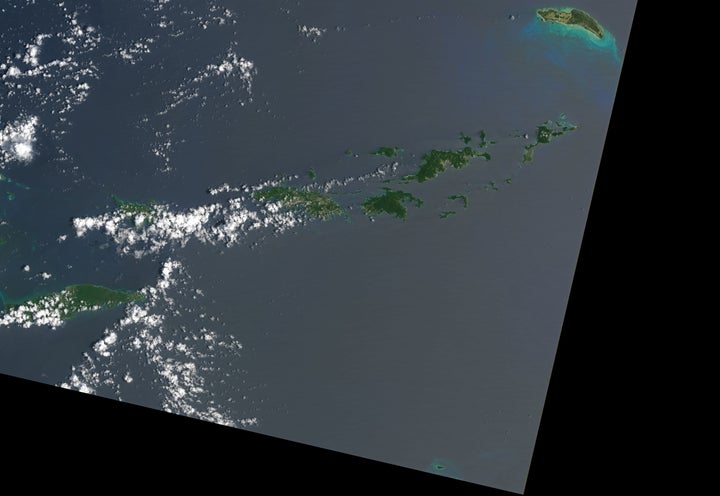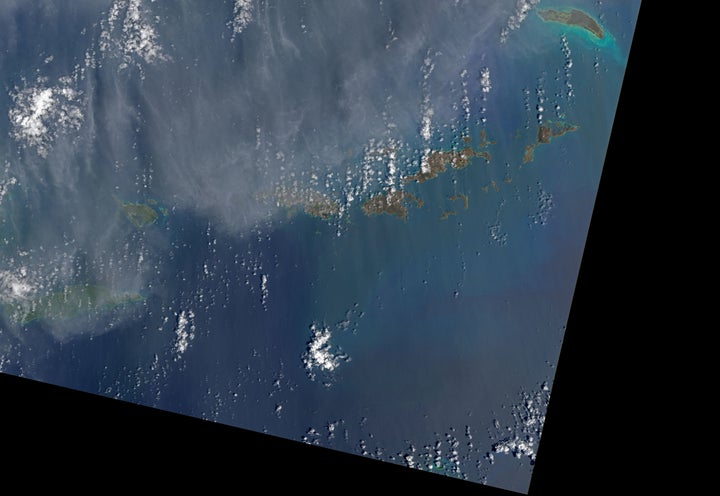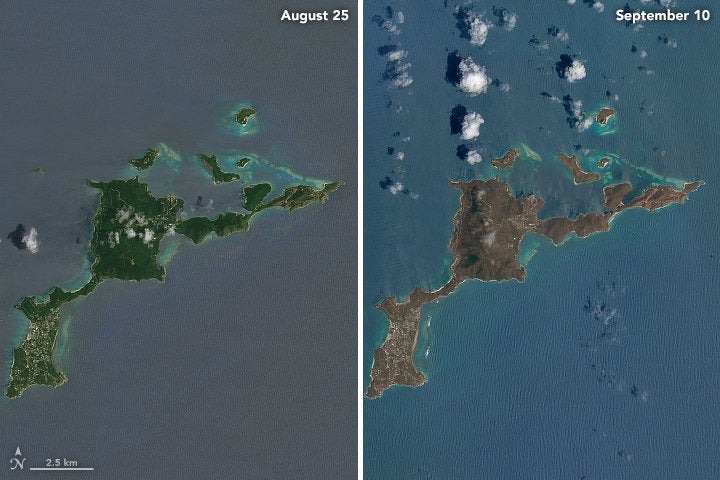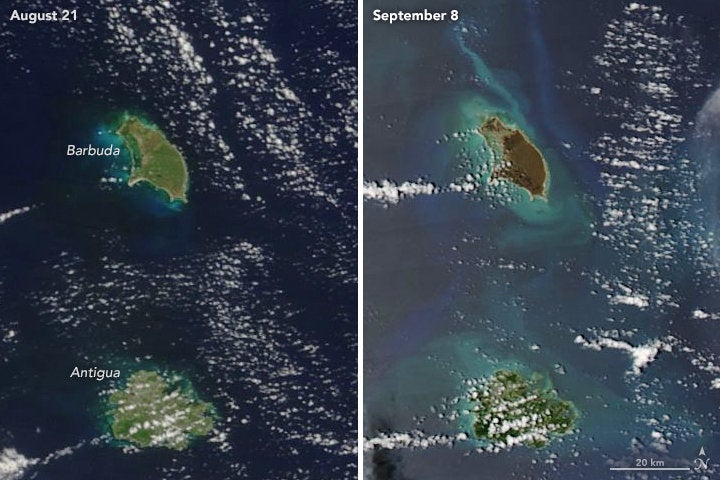Hurricane Irma has been making headlines as the storm moved north from the Caribbean towards mainland USA last week, leaving behind a trail of destruction and months of rebuilding for residents.
On the ground the situation looks devastating, but now footage obtained by NASA’s Earth Observatory has shown that even from miles above the earth, mother nature has certainly left her mark.
Photographs taken by the space agency’s Operational Land Imager on the 25 August, before Irma hit, and 10 September (four days after she passed over the British Virgin Islands) show how the storm has transformed the landscape.
Before

After

With the clouds clearing for the first time since the storm, NASA were able to capture the satellite images of the chain of islands, including Antigua, Barbuda, St Thomas, St John, Tortola and Virgin Gorda.
From initial observations it is apparent that the most obvious change is widespread browning of the landscape, which could be caused by a number of possible things.
The most likely reason is that the sustained winds of 185 miles per hour ripped away the lush green tropical vegetation, leaving just a view of the bare ground instead of rainforest canopy.
Alternatively, it could be that salt spray dragged up from the Atlantic and deposited on land by high winds had coated and desiccated leaves while they remain on the trees.
Images of Virgin Gorda gives a better sense of the changes that have taken place, because of the scale of the island.

It is apparent that some of the vegetation on the south and west of the island is a bit greener, likely because it was partly shielded from winds by the hills in the centre, according to NASA.
In contrast, vegetation on Antigua appears relatively healthy and intact. Reports on the ground indicate that because the eye of the storm passed to the north of Antigua, the island sustained less damage than others.

Not only have things changed on land, but can also be seen in the ocean colour around the islands.
Around Barbuda and Antigua the sea looks totally different, this is likely because of differences in the surface of the water, with areas remaining choppy in the wake of high winds and storm surges (these appear lighter because rougher surfaces, full of debris, scatter more light and appear brighter and lighter).
Much of the British Overseas Territory is still experiencing a communications blackout after power lines were severed.
UK foreign minister Alan Duncan said: “The British Virgin Islands were also not spared the hurricane’s full force. Our initial assessment is of severe damage and we expect that the islands will need extensive humanitarian assistance which we will of course provide.”
It was announced on 12 September that Boris Johnson is to fly to the Caribbean to see firsthand the destruction Hurricane Irma wrought.
The Foreign Secretary will visit the British Virgin Islands and Anguilla - this is after the Government was widely condemned for failing to help British citizens and territories.
